This little tale, part of our Alcohol, Temperance & Prohibition Collection, is not the same owl and pussycat story I remember from my childhood. Published in the time of prohibition by the Lincoln-Lee Legion, an abstinence pledge program, this “scary” story and others warn readers about the negative effects of drinking alcohol.

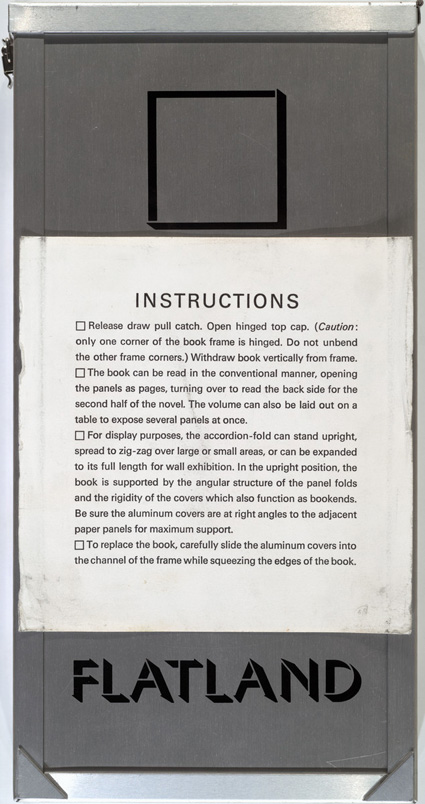
“Instructions” for reading the 1980 Arion Press edition of Flatland, atop aluminum covers and frame.
This semester the Library will commemorate the mathematical-philosophical novel Flatland: A Romance of Many Dimensions (1884) by Edwin Abbott (1838–1926). 2013 marks the 175th anniversary of Abbott’s birth, and 2014 will be the 130th anniversary of Flatland‘s 1884 publication. The exhibition “Flatland Worldwide and Edwin A. Abbott at 75 (+100)” opens in the John D. Rockefeller, Jr. library on November 1, 2013; Brown professor Thomas Banchoff, mathematician and Abbott scholar, will present a related talk on Wednesday, November 13 (at 5:30 p.m. in the Digital Scholarship Lab).
In 2005 the Library captured a rare 1980 Arion Press edition of Flatland, limited to 275 copies, featuring aluminum covers, accordion-style page binding, and illustrations designed to integrate creatively with the text. As described by the Press, this custom edition aimed to formally accentuate elements of the content:
…Andrew Hoyem‘s radical design and illustrations realize many implications of the book, such as: the “volume” can be opened out flat to form a thirty-foot plane; the plane-geometrical citizens of Flatland are infinitely thin (holes in paper); they cast shadows; their edges glow.…
Shown below are some sample spreads from the book. Stop by the exhibit to view the original.
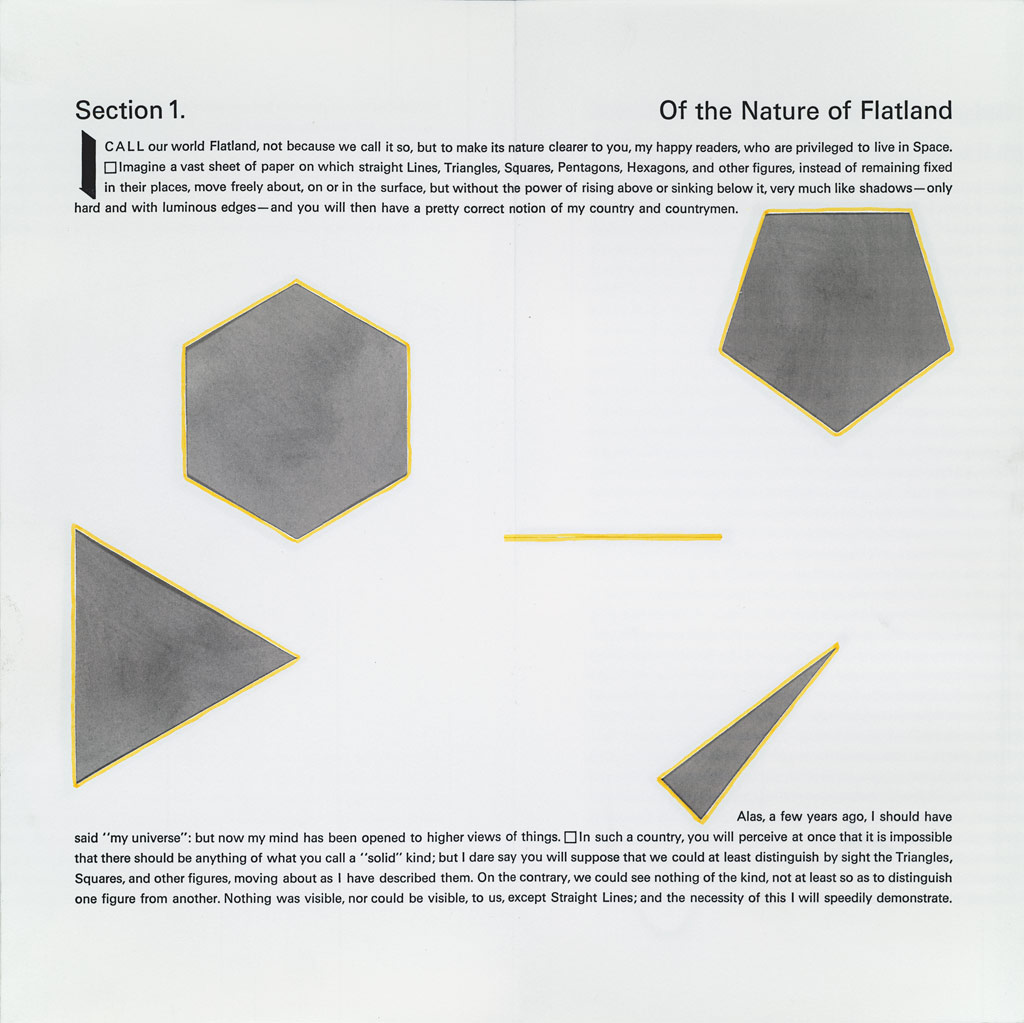
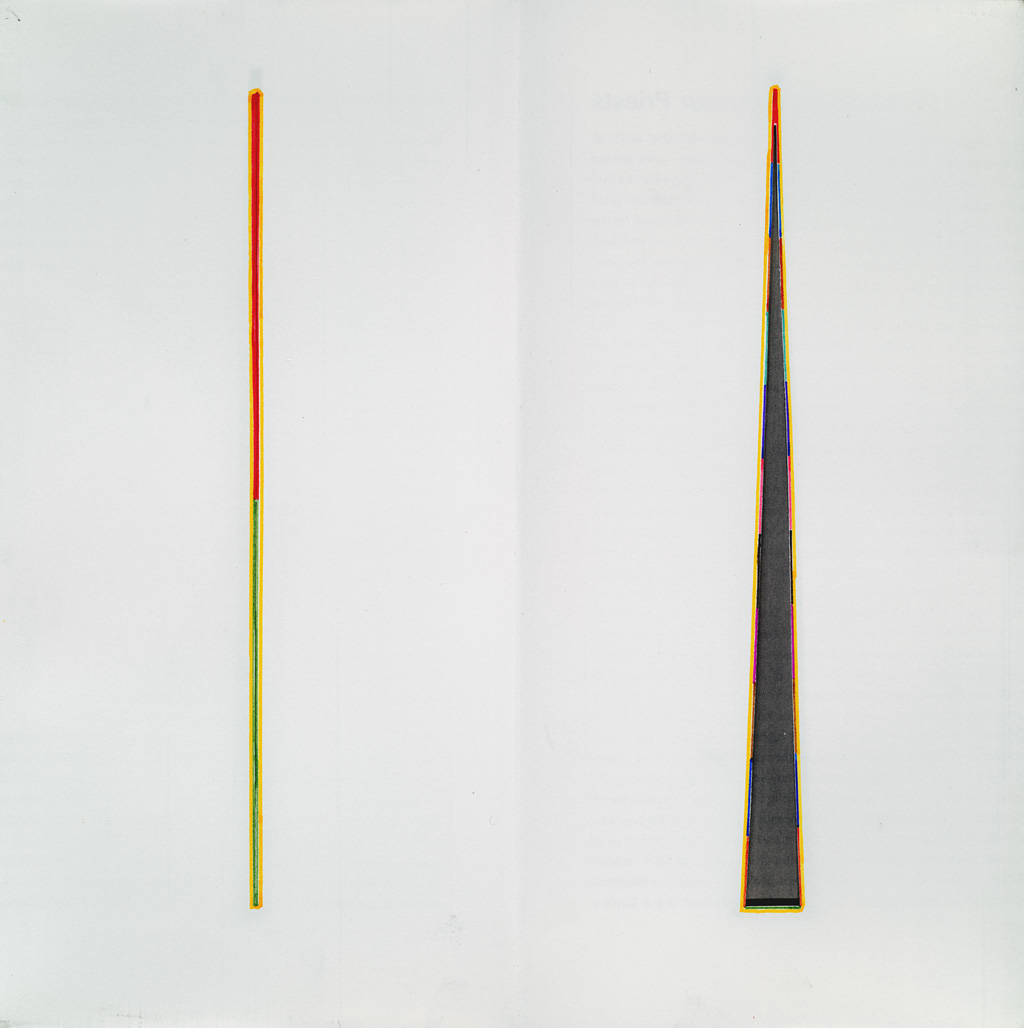
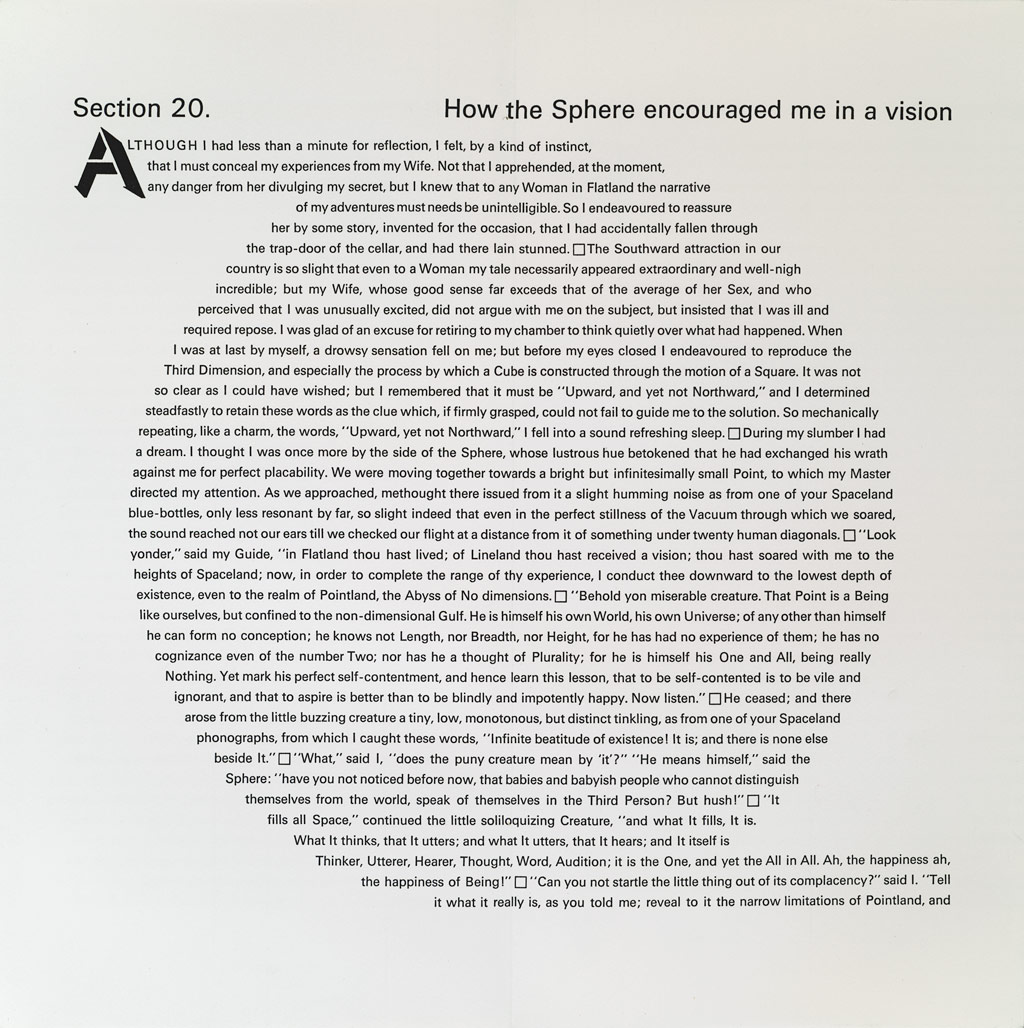
 Brown University Library Digital Collections are a rich resource for historical photographs. The collection Images of Brown contains over 4,000 digital objects alone, with more being added all the time. This collection contains many historical photographs of the campus, but also of the surrounding neighborhood of College Hill (upon which the University sits). The WhatWasThere project allows users to tie historical photographs to Google Street View and makes it possible to envision how your environment looked in the past by fading the photograph in and out. I chose to work with two photographs taken between The John D. Rockefeller Library and the John Hay Library. The photographer in each would have been standing close to the gates to the University looking down College Hill. In the tree lined views, neither library exists. The Hay was completed in 1910, and the “The Rock,” as it is commonly known, wasn’t built until 1964. The first photograph I
Brown University Library Digital Collections are a rich resource for historical photographs. The collection Images of Brown contains over 4,000 digital objects alone, with more being added all the time. This collection contains many historical photographs of the campus, but also of the surrounding neighborhood of College Hill (upon which the University sits). The WhatWasThere project allows users to tie historical photographs to Google Street View and makes it possible to envision how your environment looked in the past by fading the photograph in and out. I chose to work with two photographs taken between The John D. Rockefeller Library and the John Hay Library. The photographer in each would have been standing close to the gates to the University looking down College Hill. In the tree lined views, neither library exists. The Hay was completed in 1910, and the “The Rock,” as it is commonly known, wasn’t built until 1964. The first photograph I 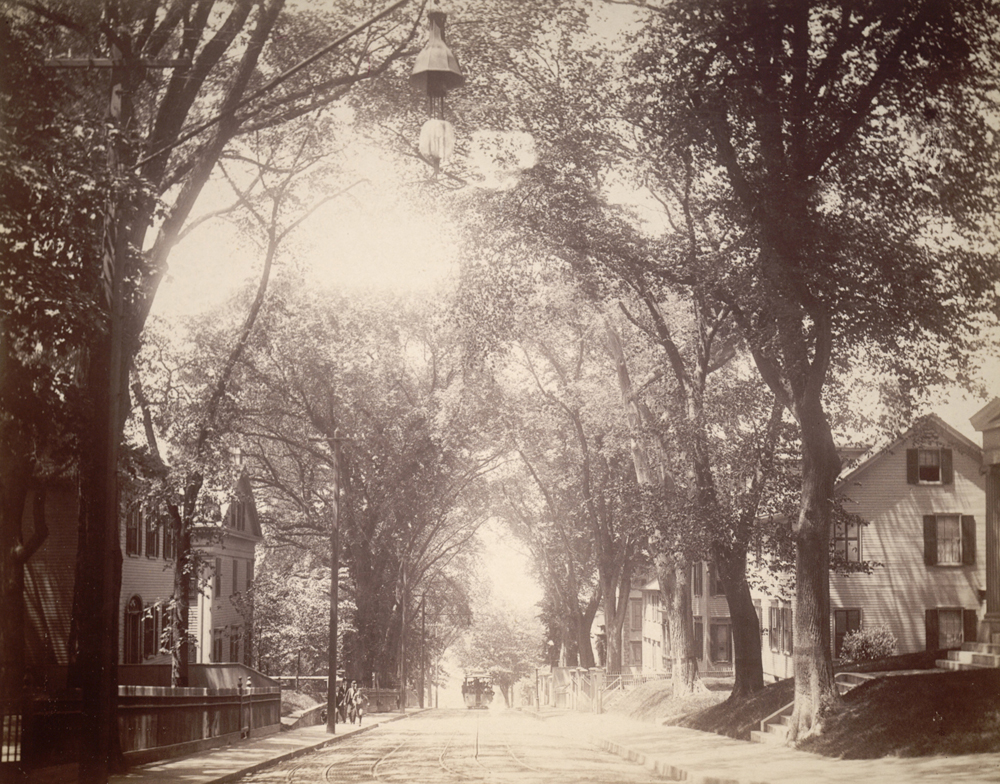 chose to “fade” represents a view looking down College Street, sometime in the latter part of the nineteenth century. The street is deserted but for a solitary figure caught in motion. What is now the RISD College Building can be seen in the distance. The second photograph appears to be slightly more recent, with the addition of tracks in the street for trolley service. A streetcar filled with passengers approaches the east side. Not all opted for public transit on this sun-filled day; several men in bowlers and boys can be seen walking (even running) up the hill. A dog seems to be accompanying them on the trek (click images for zoomable views.) The interactivity which comes from being able to fade historical photographs from a past era to the present illuminates the past, sparks our imagination, and prompts us to see our daily environment us quite differently.
chose to “fade” represents a view looking down College Street, sometime in the latter part of the nineteenth century. The street is deserted but for a solitary figure caught in motion. What is now the RISD College Building can be seen in the distance. The second photograph appears to be slightly more recent, with the addition of tracks in the street for trolley service. A streetcar filled with passengers approaches the east side. Not all opted for public transit on this sun-filled day; several men in bowlers and boys can be seen walking (even running) up the hill. A dog seems to be accompanying them on the trek (click images for zoomable views.) The interactivity which comes from being able to fade historical photographs from a past era to the present illuminates the past, sparks our imagination, and prompts us to see our daily environment us quite differently.
I encourage you browse the Brown Digital Repository for historical photographs, and to also find interactive ways to experience them. It’s fun navigating familiar streets as they appeared in the past. We would love to hear from you @BrownCurio if you make a successful fade using an image from Brown’s Digital Collections!

Looking up College Hill from South Main Street, in the winter of 1880.
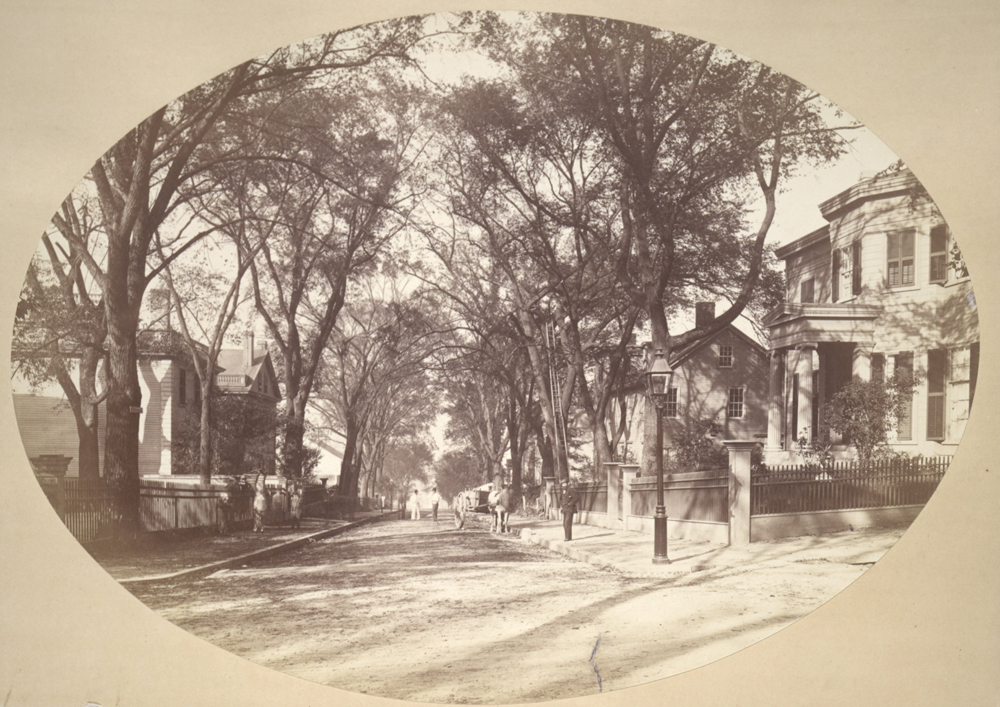
College Hill seen from the gates of Brown University, 1870








